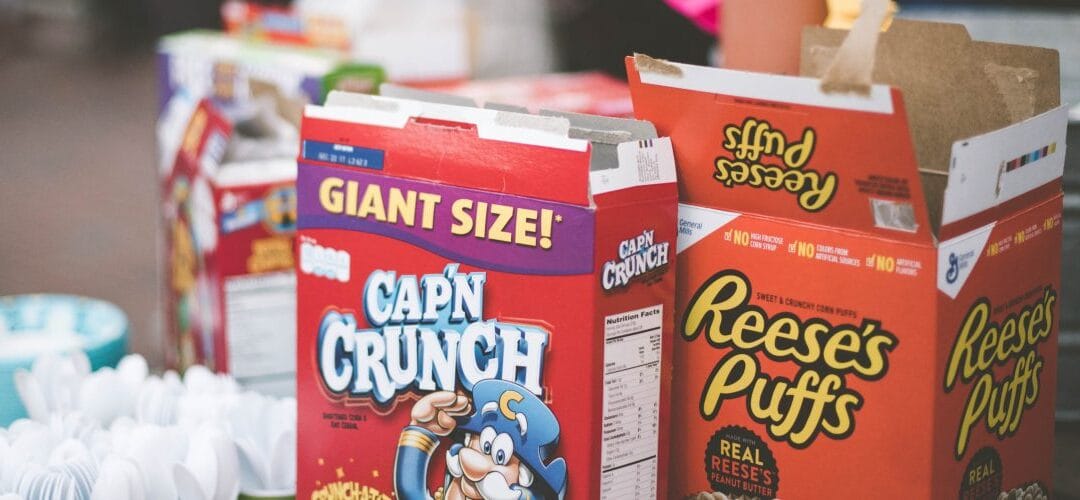(Photo by Gades Photography)
By Paul Culp, MA (Oxon.), CFT, GCDF, CCSP
While it’s generally a good idea for higher education not to become completely disconnected from changes in the society around it, we wish college life could somehow be uncoupled from the trend toward obesity in the United States. The Institute for Health Metrics and Evaluation reports that nearly three-quarters of American men and 60 percent of American women are overweight, and that nearly a third of Americans under the age of 20 are carrying excess poundage. It’s no wonder that weight gain among college students, once known as the “freshman five,” has long since left the freshman 10 behind and is now known as the freshman 15.
Though multiple studies have purported to debunk the myth of the freshman 15, claiming that the average is closer to 10 pounds, the point is under dispute and the statistics do not make pleasant reading in any case. Researchers at Utah State University have concluded that roughly 25 percent of students gain as much as 10 pounds during the first semester of college alone, while a study at Auburn University found that 70 percent of students gain weight during their college years, about 12 pounds on average. The Auburn study determined that the weight gain is indeed attributable to fat mass and that waistlines expand accordingly.
The causes of the freshman 15 (give or take a few pounds here and there) are not at all mysterious, but some of them might be in areas we seldom examine:
Sedentary living—and encroaching age!
Many college students are less active physically than they were before. This is most obviously true of athletes who do not compete in organized sports after high school. If you reduce your activity while eating the same number of calories, you will gain weight. A calorie is a unit of energy, and if you don’t spend it you store it. The cessation of growth is another factor, as any growth that might still have been occurring during the latter part of high school tends to slow down or stop in the early twenties. Eating like a kid is, well, for kids.
Loss of family meal-planning structures.
Even though the practice of sitting down together and having a home-cooked meal has become a rarity in most families, and despite the prevalence of microwave-ready processed foods in even the most orderly homes, most students will have experienced a considerable degree of familial influence on their eating habits while living at home. Parents generally provide the money for food, decide what is available, and carry out a large share of the preparation. College students on their own and free to make their own choices have a tendency to concentrate on foods that are convenient and fun. From the standpoint of weight management, that’s almost always bad.
Meal-plan food—including the “healthy” options.
Institutional food is notorious for being fatty and starchy. Serve it on an all-you-can-eat basis, and the problem is greatly multiplied. It’s possible to have a healthy diet in a typical dining hall situation, but only if you are highly vigilant and exercise terrific self-restraint. The salad bar might seem like a wholesome alternative to the burritos and mac’n’cheese, but the dressings, cheese, bacon bits, and pepperoni slices are just weight gain looking for a place to happen. While many colleges now offer more broadminded options, especially in vegetarian fare, “healthy” doesn’t always mean low-calorie. Nuts and seeds are a ready example. Bear in mind also that vegetarians often have trouble consuming enough protein without eating more overall. Ask any weight-conscious person who has subsisted during Lent on a diet heavily dependent on legumes.
Snacks, fast food, and ready-heat foods.
Pizza. Burgers and fries. Chicken strips. Packaged chips and puffs and crackers and sweets. Fatty, starchy microwave meals. Enough said.
Irregular hours and bad timing.
Skipping breakfast or otherwise eating without a regular schedule can lead to the freshman 15 because if we go too long between feedings we tend to overdo it when we do finally eat. Having allowed ourselves to become too hungry, we also make bad choices about what to eat.
Beverages, and not just the ones you think of first…
This is a major problem area. One beer has roughly the same number of calories as a serving of Oreos and nearly as many as a basic Krispy Kreme doughnut. A glass of wine has about the same number of calories as a serving of Lay’s baked potato chips. If you weigh 170 pounds, you’ll need to run about a mile to offset these calories. If you weigh less than that, you’ll have to run farther because you’re moving less body weight when you exercise and therefore burning less energy.
If you don’t drink alcohol, you still might not be escaping. A 12-ounce can of Coke is a bit less caloric than beer and wine, but who stops at 12 ounces anymore? Energy drinks have practically become a Food Group among college students, and a mere eight ounces of Monster Energy has more calories than that 12-ounce Coke. So be advised that the refreshing 8 or 12 (or more) and the freshman 15 are close kin.
Oh, and now we must commit sacrilege and talk about coffee. Plain old coffee contains no calories, but very few students wish to be so prosaic. A Starbucks caffè latte, tall, contains about the same number of calories as a beer—along with nearly a fifth of your recommended daily allowance of saturated fat. A small nonfat caramel cappuccino from McDonalds also clocks in with a beer-like calorie count.
Some of the freshman 15—some—might be water.
Most of the foods we have mentioned here, and even some of the beverages, contain substantial quantities of sodium. It’s not just the salty-tasting foods either. That serving of Oreos has 6 percent of the recommended daily allowance of sodium. Most sandwich breads will give you that much or more in one slice. A bagel or a can of soup might take you above 25 percent, a modest estimate. But one of the biggest culprits is ramen noodles, which currently enjoy an almost cult-like following among young adults. One 3-ounce serving of Nissin Top Ramen, chicken flavor, contains 76 percent of your RDA of sodium. Since it has only 14 percent of the recommended daily calories for a moderately active young adult male and 17 percent for a female, good luck getting as many calories as you need and coming anywhere near a healthy sodium level for the day.
Why does sodium matter? Large quantities of it greatly increase your risk of high blood pressure and heart disease, but for our immediate purposes here the problem is that salt causes water retention, which adds weight and bulk to the body. At least the remedy for this is simple: Reduce your sodium intake, drink enough water, and your kidneys will do the rest.
It is not our purpose here to set ourselves up as nutritionists, but without question your college performance and your overall well-being can only benefit from attention to your health, and the freshman 15 simply is not good for you. We at The Coaching Educator want to share anything we know that will help you form realistic expectations about college life. We have nearly a decade of experience of not only helping students get into the right college and find the means of paying for it, but also of helping them succeed there.
There’s the freshman 15, and then there’s TCE’s freshman 25…
In 2018, our student/clients earned in scholarship money an amount 25 times the cost of our services, more than $1 million altogether. To learn more about our philosophy and capabilities, be sure to watch our free webinars, listen to our podcasts, sign up for our four-week College App Boot Camp, consider our Ultimate Programs and our special services for athletes and performing-arts students, and book a consultation to hear what we can do for you and how we do it. Keep reading this blog, and look for us on social media (see links below) as we keep our clients and admirers advised of new developments in our effort to help students get into and succeed at the right school.
Paul Culp is certified as a global career development facilitator and writes about college admissions, college costs, financial aid, and college life in general for The Coaching Educator team. A former journalist and corporate ghostwriter who now operates Shenandoah Proofreading, Editing & Composition Services (SPECS), he has also been a humanities teacher at all levels from university down to sixth grade. Paul has degrees from Oxford University, Jacksonville State University, and Samford University, and also is certified as a fitness trainer.
Recommended Reading About College Life
Culp, Paul. “College, Flu, and You,” The Coaching Educator, 4 October 2018, http://tce.local/2018/10/04/college-flu-and-you/
Culp, Paul. “Getting to Grips With Test Anxiety,” The Coaching Educator, 28 November 2018, http://tce.local/2018/11/28/getting-to-grips-with-test-anxiety/
Culp, Paul. “TCE’s Illustrated Guide to a Healthy Spring Break Trip,” The Coaching Educator, 27 February 2019, http://tce.local/2019/02/27/tces-illustrated-guide-to-a-healthy-spring-break-trip/
Culp, Paul. “These Go to Eleven: Our All-Star Lineup of College Illnesses,” The Coaching Educator, 19 October 2019, http://tce.local/2018/10/09/these-go-to-eleven-our-all-star-lineup-of-college-illnesses/

